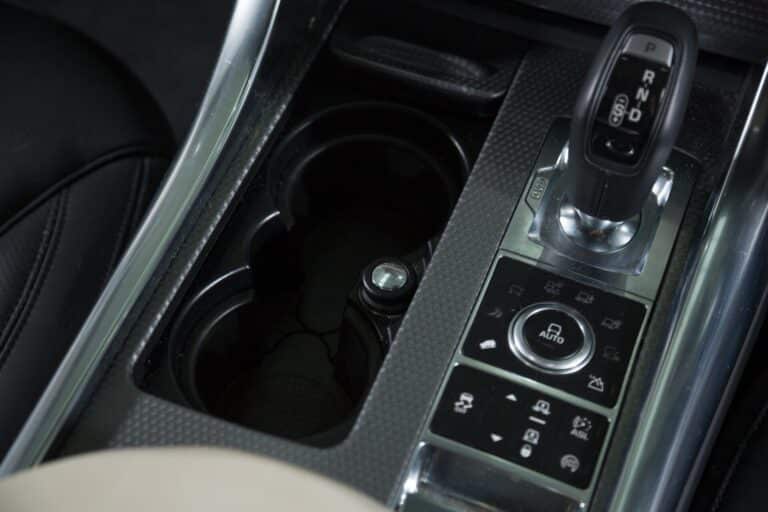Ram Tire Rotation Pattern (Beginners Guide)
Most people know that they should rotate their tires regularly, but they may not know why or how often they should do it.
So when your mechanic informs you that it’s time for another tire rotation, it’s good to know why this is important and how often you should budget to get your Dodge serviced.
Ram Tire Rotation pattern is a kind of preventative maintenance that helps ensure that your tires wear equally from front to rear and side to side. This improves wear quality and helps prevent a rise in pattern noise. Consequently, an excellent tire rotation pattern preserves the life of your Ram truck’s tires.
Dodge Ram Tire Rotation Pattern?
Dodge ram Tire rotation refers to routinely repositioning the tires on your vehicle in patterns seen either from the front to the back or from the side.
It is an essential aspect of tire maintenance that contributes to the overall degree of safety and is an essential part of the process.
In addition, the rotation of your tires is likely needed to maintain the validity of the warranty on your tires.
Also, you shouldn’t let the fact that there is a slight discrepancy in front-to-rear tread depth of an inch prevent you from rotating your tires owing to concerns about hydroplaning equilibrium. Read more about Ram 1500 4-inch Lift 33s.
Although it is doubtful that the slight discrepancy will throw off balance between the front and back wheel, you should note it.
Additionally, keep in mind that any disparities in wear rates signal that you should do tire rotations more frequently.
What Is The Proper Tire Rotation Pattern?
To determine which tire rotation pattern is best suited to the type of tire you’re using and the type of vehicle you’re driving, you’ll need to consider whether your car is front-wheel drive or rear-wheel drive.
Also, you should consider the sort of tires you’re using(directional or non-directional), the size of your front and rear tires, and whether you have a permanent or temporary complete spare that can be rolled through.
Uniform Size And Non-Directional Tires
#1. The Rearward Crossing
The rearward cross pattern is recommended for four-wheel, all-wheel, or rear-wheel drive automobiles.
For improved handling, the back tires are shifted forward and kept on one side of the vehicle, while the front tires are relocated to opposite sides of the rear axle.
#2. X-Pattern
Front-wheel drive vehicles are best suited to light trucks and sedans since all wheels are moved diagonally, shifting from one axle to another and shifting from one side to the other.
#3. Forward Crossing
For front-wheel-drive vehicles, this is the most common pattern. There are two distinct changes to the front and rear axles.
Uniform And Non-Directional Tire (Including A Spare Tire)
To keep the tread on your full-size spare tire evenly worn, you should rotate it with the other four tires on your vehicle.
Even the tiniest deviations can substantially impact a car’s drivetrain in all-wheel or four-wheel drive arrangements.
#1. Rearward Cross (Vehicles With Rear-Wheel Or Four-Wheel Drive)
Rear-axle spare tire moves to the right side of the rear axle, while both front-axle tires shift forward to the right side of the vehicle.
The left front tire will now serve as your new spare tire, while you should shift the right front tire diagonally back to the left side of the rear axle.
#2. Forward Cross ( Front-Wheel Vehicles)
On the front axle, the rear tires are rotated such that they are now on diagonally opposing sides, and the front tires at the right are then converted to spares.
Finally, both front and rear tires are relocated back to their original positions to make room for a spare tire on the right axle.
High-Quality Performance And Directional Tires
#1. Side To Side
Changed tires and axles are still connected to the same wheelbase. On one side of the car are two rear tires, while two front tires move in opposite directions.
#2. Front To Rear
All four wheels remain on the same side of the car as they are swapped from one axle to the next for the entire tire change.
For example, it’s common to swap the left rear tire for a right rear tire when rearranging a vehicle’s axles.
How To Rotate Tires On A Ram 1500?
There have been numerous Dodge Ram pick models since the company was founded.
You can get the Ram with either a two or four-wheel drive system and a large, flat cargo bed.
Changing the tires on jack stands can be more complicated than on a hydraulic lift because the vehicle is large and heavy.
Here are guides on how to change tires on a ram 1500.
- You should position a piece of wood between the truck’s back tires to keep it from rolling while jacking up its front end. In addition, you should loosen each tire’s lug nuts.
- Using two jack stands, lift the vehicle’s rear on two jack stands and lower the front of the vehicle back down. Next, remove tires by jacking up the truck and leaving enough room.
- It is recommended that the tire on the passenger side’s back axle be relocated to the front, and the tire on the passenger side’s front axle be moved to the driver’s side. Replace the driver’s side rear tire with the passenger’s side front tire.
- Replace the wood behind the tires after lowering the rear end. Tighten each lug nut’s heaviest setting when you lower the front end. Lower the truck and tighten the lug nuts if you’re on a lift. You should have the truck aligned after rotating the tires to ensure that the tires wear evenly.
How Often Should You Rotate Tires On A Ram 1500?
If you are unsure how often you should rotate your tires, you should first consult the owner’s manual that came with your vehicle.
It is recommended that you get your tires rotated every five thousand to seven thousand five hundred miles.
Still, the specific amount may vary depending on your vehicle’s brand and the type of tires that are fitted.
It is also recommended that you rotate your tires approximately once every six months, regardless of how far you have traveled in that time.
Remember that the tread wear on your tires and the frequency with which they need to be rotated can be affected by several factors.
For example, you may need to pay your neighborhood service center more frequent visits if you tend to drive recklessly or carry large goods.
Reasons For Tire Rotation
There are many reasons why rotating your tires on a Ram 1500 is essential for your tire maintenance.
Regularly rotating your tires ensures that wear is uniformly distributed across all four tires, extending their tread life.
As a result, the amount of torque and friction required to turn, accelerate, and brake are distributed differently among your vehicle’s tires, which can lead to greater or lesser wear on your tires depending on where you put them.
To prevent uneven wear caused by the deep, fresh tread, you should rotate brand-new tires every five thousand miles.
Uniform tread wear also aids in maintaining uniform tread depths on all four of your tires, which improves overall traction and handling.
Consequently, it will improve your car’s handling and stopping power, making it safer to drive.
As a result, your vehicle’s handling and braking will be enhanced, and it will be safer to drive.
In addition, all-wheel-drive vehicles can benefit from minor wear on their pricey drive components because the strains on the drivetrain are reduced because of equally worn tires.
Tire Rotation 101 (with ONLY 2 Jack Stands)
Conclusion
Tire rotation is an excellent practice that improves the tread life of your tires. Also, rotating the tires every other time you change the oil is a great way to remember.
It is feasible to rotate your tires by yourself using jack stands and a jack.
However, it is typically not very expensive to have a mechanic do the operation for you.






